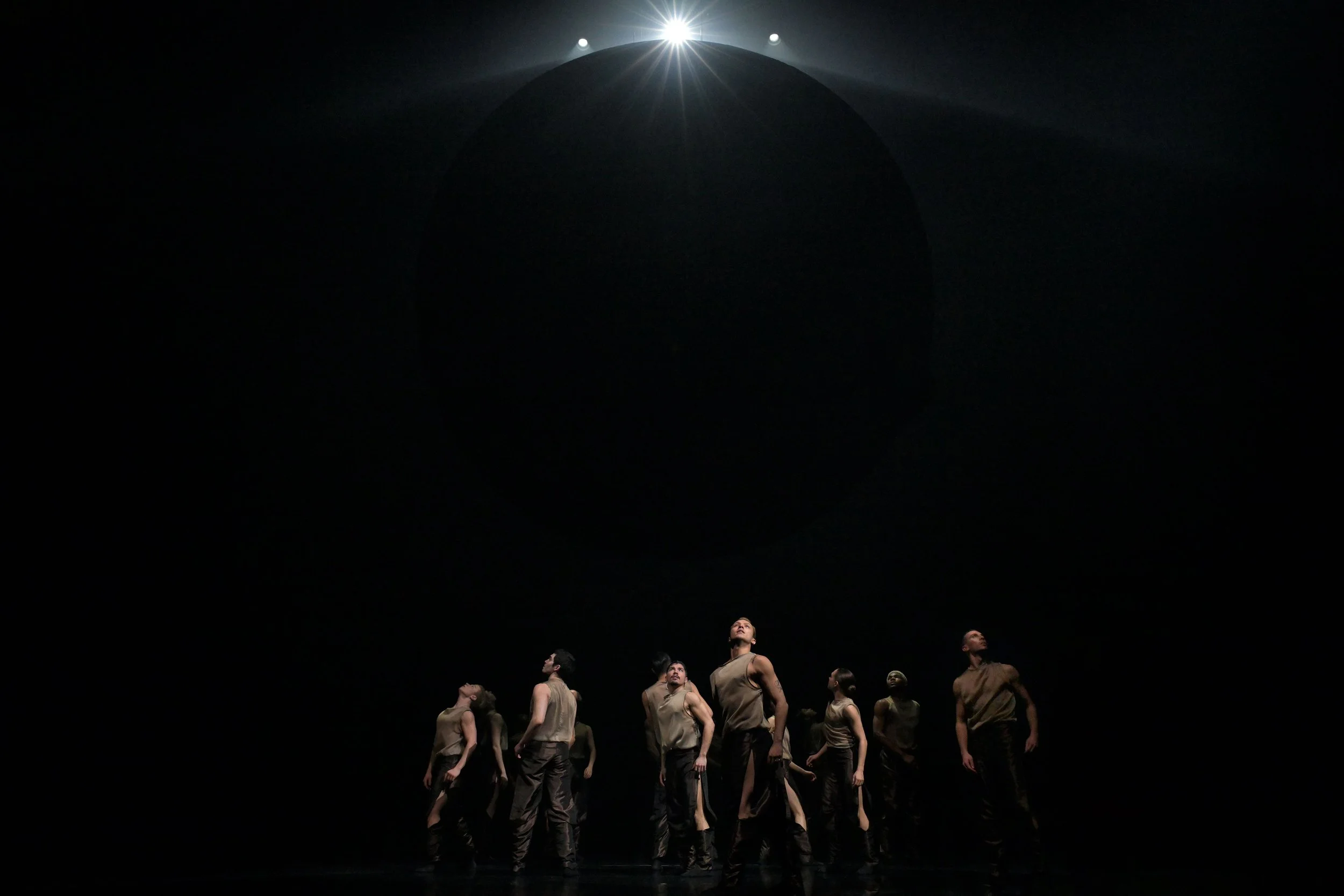Ziyian Kwan and Rianne Svelnis conjure a garden of wonder and mystery in Dumb Instrument Dance's Dreaming of Koi
Audiences will move through a botanical labyrinth at the Dr. Sun Yat-sen Classical Chinese Garden, during Dancing on the Edge
Photo by David Cooper
Dancing on the Edge presents Dumb Instrument Dance’s Dreaming of Koi live at the Dr. Sun Yat-sen Classical Chinese Garden from July 8 to 10 and 12 to 15 at 5:30 pm. Tickets allow free access to the centre’s Rivers Have Mouths exhibit.
ABOUT THREE SUMMERS ago—long before COVID took over the news cycle—a hungry otter decimating the Dr. Sun Yat-sen Classical Chinese Garden’s beloved koi collection was dominating headlines.
In the years that preceded those incidents, dancer Rianne Svelnis recalls multiple orange-and-white speckled fish greeting her at the urban oasis’s pond. Not so when she and Dumb Instrument Dance’s Ziyian Kwan began working on a site-specific, outdoor new work in the park for 2021’s Dancing on the Edge festival: the koi seemed to be hiding, elusive, or missing. And that feeling of mystery around the natural world became a guiding inspiration for their whimsical new piece in the garden, Dreaming of Koi.
“Only occasionally do we get a visit from them, so we are literally dreaming of koi,” Svelnis says. “It reminds us that the koi are very present but we don’t always see them—the secret and the unseen, the mythical and the real. It could be that we just believe they are there.”
Speaking on a conference call, Kwan adds that koi carry strong symbolism in Chinese culture (representing prosperity and happiness). “They’re not a fish that we eat; they’re decorative and beautiful,” she adds.
It’s that sense of wonder and magic around fauna and flora, playing with what is real and unreal, that drives Dreaming of Koi, co-created by the pair with taiko drum sensation Kage, who provides the rhythmic score for the show.
Amid the gorgeous, labyrinth of greenery, audiences will see Kwan in a “patently absurd” furry bear suit; Svelnis appears as a “flower monster” decked out in faux blooms.
“What is real and what is fake? How can a plastic flower evoke a similar sensation that a real flower can in my body?” Svelnis says. “The bond I might have with a real flower might carry over if I’m holding a plastic red flower. It’s where that response and absurdity and beauty get all mixed in together.”
Kwan, who has worked on several pieces with Svelnis over the pandemic year, adds those delirious ideas mix with the history and complexity of the site itself. That multilayered past will resonate further with ticket holders, who will also get free access to a new exhibit in the garden’s gallery, Rivers Have Mouths, focusing on the relations between Indigenous people and Chinese pioneers.
“It’s this sanctuary on stolen land in one of the poorest neighbourhoods in Canada, and then it’s a Chinese cultural centre in a Chinatown where culture is disappearing,” Kwan reflects. “Also, it’s a wilderness that is manmade.
“And we are just tiny specks within all that,” she adds. “It’s a little microcosm of our own need to realize we’re interdependent with the natural world.”
Photo by David Cooper
Dreaming of Koi marks the latest in an ongoing artistic exploration Kwan has been making around Chinatown. Last year, she performed an impromptu dance action outside the garden against the anti-Asian hate that had cropped up during the pandemic. Earlier this spring, she created a series of Spells for Chinatown performances, and she’s even opened up a studio space called Morrow in the neighbourhood. A remixed video for her earlier The Odd Volume, investigating her own memories of growing up Asian Canadian in Vancouver and shot in and around the area, can be seen as part of Dancing on the Edge Festival’s film package this year.
As so often is the case with a Kwan/Dumb Instrument Dance piece, audiences can expect the unexpected with Dreaming of Koi, performed in an environment that already offers up its own surprises. Having worked in the garden for weeks now, carefully choosing the nooks and crannies they’ll use in the site-specific performance, the artistic duo knows that the garden has a life of its own that will shift the show from summer evening to summer evening.
“I was reflecting last night that the garden is moody,” Kwan comments, “a little bit like we bring our mood to the performance.”
“I really feel one of the biggest learnings I’m having in this space is how much listening we are doing in the garden,” Svelnis observes, likening the setting to a collaborative partner in the work. “We might have ideas about what we want to do in the garden, and then we get there and it has its own ideas.
“Sometimes the garden goes, ‘This doesn’t work for me,’” she adds.
“Sometimes it’s windy, so we feel compelled to be perfectly still because there’s so much dancing already going on. And you have to allow for the birds flying in, the herons, the crows, and then the sounds of the city: helicopters, ambulances.” And the otter? Hopefully he’ll stay away--and be satisfied with just dreaming of koi, instead of eating them.















